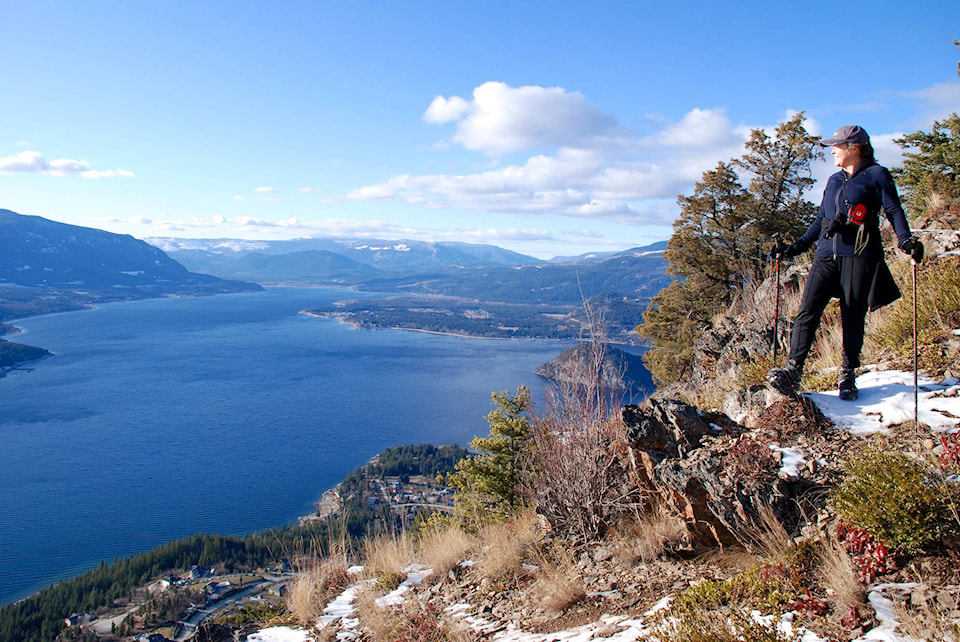The Tyee is an independent online magazine known for its lively, informative news and views. In mid-December, it published a feature about my book Everything Shuswap, with an interview and excerpts from chapter four.
Tyee editor, Barry Link, prefaced the interview by noting, “It is colourful and accessible and reveals the Shuswap has much of what Tyee readers adore: clean lakes, green forests, farmers markets and folk music.”
Here are some excerpts from the interview:
1. How do you define bioregionalism and how did that influence how you created this book?
Bioregionalism, or fostering a sense of place, is a way of life that focuses on regional self-sufficiency, sustainability and local decision-making. As a retired, back-to-the-lander who has lived on the same property for 48 years and who spent the “turn-around-decade” working as an activist and environmental journal editor, I considered two projects back in 2005; either write a book about B.C.’s forests or about the Shuswap. Both were needed, but I chose the latter, because I am a bioregionalist who wants to tell the story of where I live to enrich my neighbours and the world. Ideally, the book will improve the knowledge base and thus foster greater appreciation and respect for the Shuswap.
2. It’s an enormous amount of work. What prompted you to take on the task?
It is my deep commitment to help my community that prompts me to take on projects that fill gaps, such as helping protect 25,000 hectares of new parkland in the Shuswap. Much of what I have done and continue to do, beginning with helping to initiate a local history journal in 1988, involves research and writing. I love our region and it continues to irritate me when I hear the Shuswap mislabeled as the North Okanagan, or simply lumped in as part of the Thompson. Most other regions of the province are well known and have books written about them. There had never been a book written about the Shuswap region. I took on the task because I have a passion for the Shuswap, which I want to share with others. The better people understand where they live, the more likely they will want to protect it.
3. Who is the book for?
People in the Shuswap or those from outside the area? As Mark Hume wrote in the blurb on the back of the book, “it should be mandatory reading for anyone who lives in or visits the Shuswap.” It is also enjoyable reading for anyone who loves to learn about new places and perhaps after reading the book, they will decide to visit or move to the Shuswap. Given that Dr. David Suzuki wrote after receiving a copy, “Every part of the country should have something like Everything Shuswap,” the book can also serve as a template for other communities.
4. Are you surprised about what you discovered about your own part of B.C.?
When we travelled throughout the region gathering stories and photos, our discoveries always impressed us. We found gorgeous waterfalls, giant trees, stunning vistas, old decaying cabins and homesteads, and sadly, disgraceful damage to sensitive soils and flora by motorized “wreckreation.” There were more discoveries in archives and the photo quest, which took endless hours searching and dealing with the acquisition paperwork.
Some of the “ah” moments go back to first visits to what are now parks, such as the mystical moss covered boulders adjacent to English Creek above Three-Valley Gap, or our first glimpse of Tum Tum Lake, the Shuswap’s own Lake Louise. Perhaps the best part about the Shuswap is that there are many more discoveries yet to be made. The region is vast and while there is a network of logging roads nearly everywhere, there are many areas where no one has ventured.
5. Notwithstanding that you just created a book about a specific area, but are we too isolated in our own individual regions of B.C. compared to the rest of the province?
Isolation is not the problem, unless it is isolation from each other and our surroundings.
Books like Everything Shuswap can help connect people together and connect people to nature as they learn more about where they live.
We all face a looming environmental crisis as the temperature escalates. While we need to continue pressing for mitigation, we also need to work on adaptation, which includes understanding more about where one lives and whom one lives with.
One of the key messages included in the draft teacher’s guide to Everything Shuswap is that the book can inspire students to discover more about where they live and use their experiences and what they have learned to write, do a presentation, film or create art.
